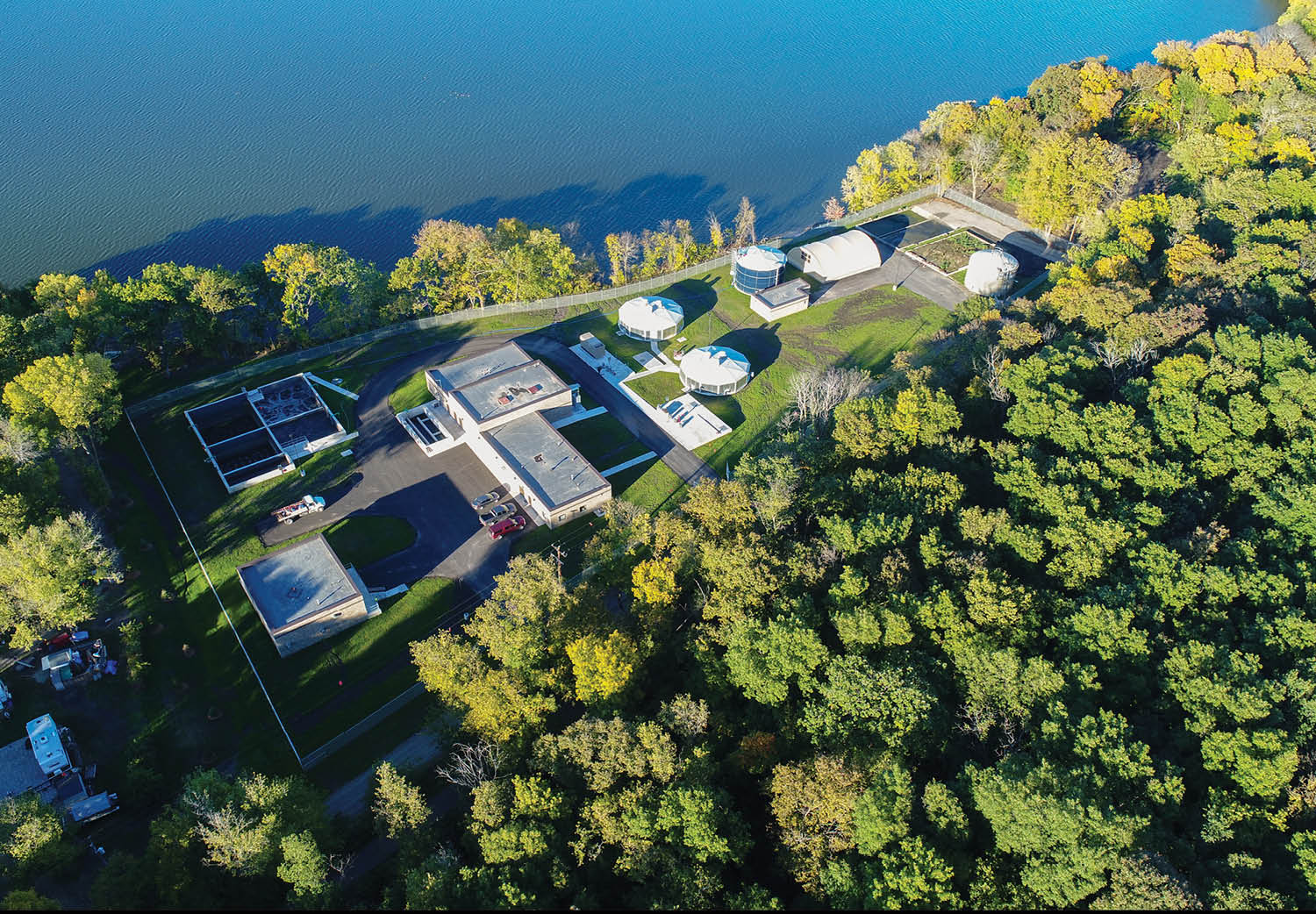
Wastewater Treatment: Building for the Future
The City of Waterville needed to update their significantly aging Wastewater Treatment Facility (WWTF) to meet the effluent phosphorus limits in the new NPDES permit and meet future wastewater treatment needs. The WWTF discharges to Sakatah Lake, one of the city’s most important resources. Faced with a 50+ year-old facility, a growing community, and a prospering campground struggling with onsite treatment systems, the city was hoping for a comprehensive approach to address all infrastructure needs.
The Minnesota Pollution Control Agency (MPCA) had issued a preliminary effluent limit to the City of Waterville on December 2, 2013. Much of the limits remained the same as the previous permit except a change to the phosphorus discharge limit. The proposed preliminary phosphorus limit is 1 mg/L with a maximum mass limit of 387 kg/yr (853.10 lbs/yr). Phosphorus is a naturally occurring compound and is an essential component of life getting into wastewater as an element of human waste. Higher levels of phosphorus are a result of commonly used fertilizers and detergents and can cause considerable algae growth in lakes and streams. The MPCA commonly limits phosphorus in wastewater discharge to reduce accelerated algae growth and prevent excess nutrients in state waters.
The city discharges its treated wastewater to Sakatah Lake. The Upper Sakatah Lake is impaired due to excess nutrients found in the water. Waterville’s WWTF was found to have the reasonable potential to cause or contribute to this water quality impairment and federal regulations required that this facility receive a water quality-based effluent limitation (WQBEL). Any flow expansion at the facility requires the city to reduce the effluent concentration to meet the mass limits.
A more restrictive total phosphorus limit may be necessary following the completion of the Upper Sakatah Lake TMDL study and the adoption of numeric river nutrient criteria during the next triennial rulemaking session. The TMDL for the Upper Sakatah Lake will likely be completed in the coming decade. The limit recommended here is more restrictive than the WQBELs for Lakes Byllesby and Pepin. Both nutrient-impaired lakes are downstream of the Waterville WWTF and Upper Sakatah Lake. Since the WQBEL for Upper Sakatah Lake (387 kg/yr) is the most restrictive limit, it is the limit that was applied.
To meet the mass limit of 387 kg/year (853.19 lbs/yr), the city is required to treat wastewater to average total phosphorus concentration of 0.48 mg/L based on the design flow of 0.575 MGD. The city’s existing wastewater treatment facility would not be able to meet these phosphorus effluent limits with its outdated and failing facility.
During the planning stages, a comprehensive approach was taken to evaluate the whole facility and its impacts on the environment. The City of Waterville and Bolton & Menk, Inc. worked together to plan, design, fund, and construct a new state-of-the-art WWTF. The area campground also wanted to expand and needed wastewater capacity to start moving away from on-site treatment options. The flows and loadings for the city’s urban service area for the design year (2035) were developed and various treatment options were explored and evaluated. The extended aeration process was selected due to the consistent high-quality effluent produced, flexible nutrient removal, and operational ease. Extended aeration is also a first step into more complex activated sludge processes that may be necessary to meet additional and more stringent effluent requirements in the future.
The design year (2035) flows and loadings developed were:

Waterville’s original WWTF was constructed in the 1950s and had gone through numerous rehabilitations over the years. The existing facility was a trickling filter facility with various treatment processes either running at capacity or nearing the end of their useful life. The existing trickling filter and digesters were in desperate need of rehabilitation. The existing pretreatment was undersized for current flow and not efficiently removing grit. The grit had washed through the existing system and filled the existing digester and storage tanks.
As published in The Wastewatcher
